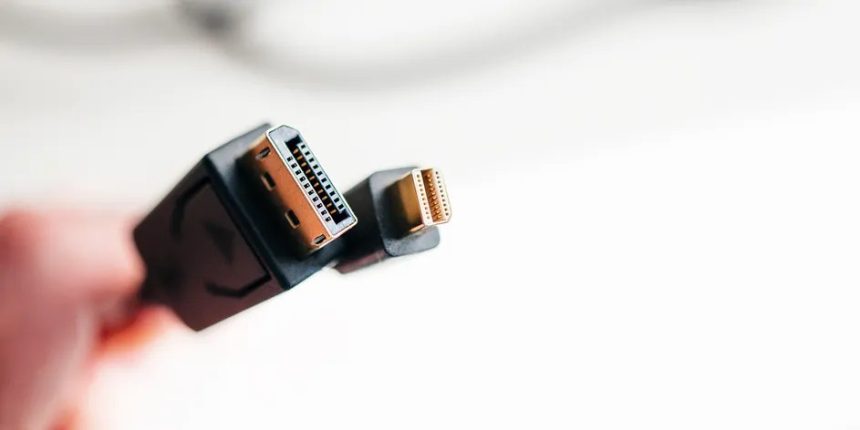Dealing with a malfunctioning DisplayPort can be incredibly frustrating, especially if your work or entertainment depends on it. Common problems include no video input, screen flickering, and other related issues.
Resolving DisplayPort Issues
There are several potential causes for these problems, such as outdated drivers or hardware-related issues. Fortunately, there are several steps you can take to fix a non-working DisplayPort.

1. Verify Cable Connections
When facing DisplayPort problems, the first step is to thoroughly check the cable connections. Loose or faulty cables are often the root cause of port issues. Poor connections can lead to display problems, including a lack of video output.
Ensure that the cables are securely connected to establish a stable connection. Trying different cables can help identify any cable-related issues.
In some cases, the cable itself may be internally damaged or have a faulty connector, preventing the proper transmission of video signals. If this is the case, replacing the cable may be necessary.
2. Clean the DisplayPort
Dirt, debris, or dust accumulation can hinder the DisplayPort’s connection and cause problems. Regularly cleaning the DisplayPort is important to ensure optimal performance.
If it has been a while since you last cleaned the DisplayPort, you can use a can of compressed air or a soft brush to remove dirt and debris from the port. However, exercise caution during the cleaning process to avoid damaging the port, and refrain from using any liquids.
Before cleaning, turn off the computer and disconnect all cables to prevent accidental damage.
3. Confirm the Correct Input Source
If your monitor has multiple input sources, it’s crucial to connect the cable to the correct active port. For instance, if the active DisplayPort is labeled as D1, plugging the cable into the D2 port will not function properly. Consult the manufacturer’s user manual to determine the active ports.
Once you’ve identified the active port, connect the cable to it and check if this resolves the problem.
4. Restart Display Drivers
DisplayPort issues can sometimes arise from problems with the display drivers. These drivers serve as the link between the graphics card and the operating system, and if they are outdated or corrupted, they can cause various display-related problems.
To address these issues, try restarting the display drivers. On a Windows machine, unplug the device from the DisplayPort on your monitor and press the Windows + Ctrl + Shift + B keys simultaneously. You should hear a beep sound. After hearing the beep, plug the DisplayPort cable back in and check if the issue has been resolved.
5. Disable DisplayPort 1.2
If you are using an AMD GPU and experiencing issues with your DisplayPort, it’s possible that DisplayPort version 1.2 is causing the problem. You can attempt to resolve this by disabling DisplayPort 1.2 and enabling an earlier protocol version through the graphics card settings. However, keep in mind that disabling DisplayPort 1.2 on an 8K monitor will limit the maximum resolution and refresh rate supported by your display.
Resolving Your DisplayPort Issues
If you have tried all the suggested solutions and are still encountering problems with your DisplayPort, it may be advisable to seek professional assistance or contact the manufacturer for further guidance. To prevent similar issues in the future, regularly update your display drivers and ensure that all connections are securely plugged in without any damage or debris.

